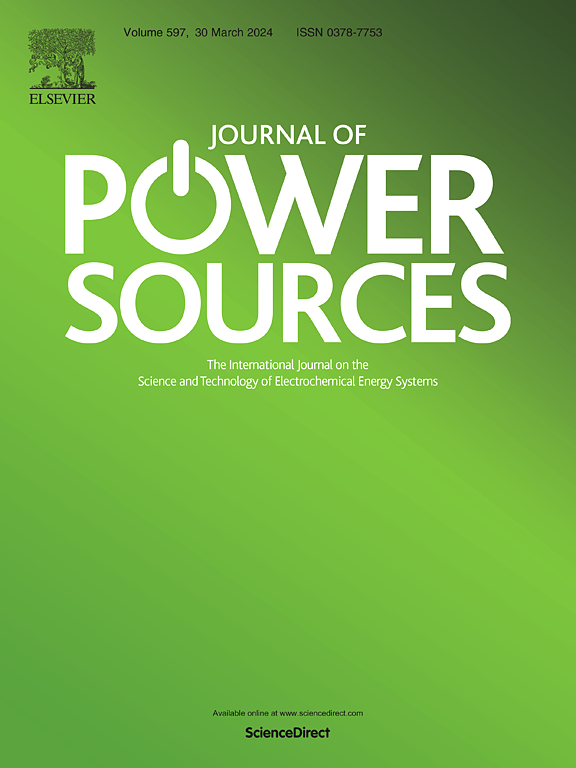Design of free-standing porous carbon nanofibers anodes for lithium/sodium/potassium storage batteries
IF 8.1
2区 工程技术
Q1 CHEMISTRY, PHYSICAL
引用次数: 0
Abstract
Porous carbon nanofibers (PCNFs) are promising anode materials for alkali metal-ion batteries due to their 3D conductive network structure, large specific surface area and active storage sites for low-valance metal ions. However, the effects of PCNFs with different pore structures on the electrochemical performances and energy storage mechanism are still unknown. Herein, mesoporous F127-PCNF and macroporous SiO2-etched-PCNF are prepared by electrospinning method as independent anodes for lithium-ion batteries (LIBs), sodium-ion batteries (SIBs) and potassium-ion batteries (PIBs), respectively. The experimental results and DFT calculations indicate that intercalation is the main energy storage mechanism in LIBs. The enlarged interlayer spacing of SiO2-etched-PCNF is more conducive to intercalation/deintercalation of Li+, and it can deliver a reversible capacity of 716 mAh g−1 after 200 cycles at 0.1 A g−1, which is clearly higher than that of F127-PCNF (568 mAh g−1). In contrast, the adsorption mechanism is dominant in SIBs and PIBs. The higher specific surface area and abundant defect sites of F127-PCNF achieve efficient adsorption of Na+/K+, resulting in superior cycling and rate performance compared to SiO2-etched-PCNF. This comparative study provides a reference for the understanding of different energy storage mechanisms and furnishes guidelines for the effective development of PCNFs-based anode materials.

求助全文
约1分钟内获得全文
求助全文
来源期刊

Journal of Power Sources
工程技术-电化学
CiteScore
16.40
自引率
6.50%
发文量
1249
审稿时长
36 days
期刊介绍:
The Journal of Power Sources is a publication catering to researchers and technologists interested in various aspects of the science, technology, and applications of electrochemical power sources. It covers original research and reviews on primary and secondary batteries, fuel cells, supercapacitors, and photo-electrochemical cells.
Topics considered include the research, development and applications of nanomaterials and novel componentry for these devices. Examples of applications of these electrochemical power sources include:
• Portable electronics
• Electric and Hybrid Electric Vehicles
• Uninterruptible Power Supply (UPS) systems
• Storage of renewable energy
• Satellites and deep space probes
• Boats and ships, drones and aircrafts
• Wearable energy storage systems
 求助内容:
求助内容: 应助结果提醒方式:
应助结果提醒方式:


